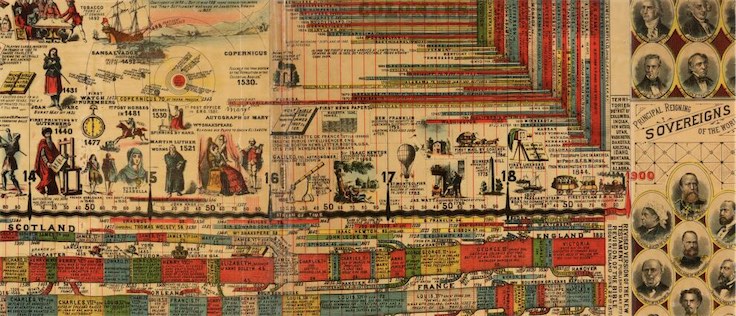In a time of great powers and empires, just one region of the world experienced extraordinary economic growth. How?
via Arts & Letters Daily: Joel Mokyr in aeon
.jpg)
Dam Square with the New Town Hall under Construction (1656) by Johannes Lingelbach.Photo courtesy The Amsterdam Museum/Wikipedia
How and why did the modern world and its unprecedented prosperity begin? Learned tomes by historians, economists, political scientists and other scholars fill many bookshelves with explanations of how and why the process of modern economic growth or ‘the Great Enrichment’ exploded in western Europe in the 18th century. One of the oldest and most persuasive explanations is the long political fragmentation of Europe. For centuries, no ruler had ever been able to unite Europe the way the Mongols and the Mings had united China.
Continue reading
=============================
How nature created consciousness – and our brains became minds
via The New Statesman by Steven Poole
In From Bacteria to Bach and Back, Daniel C Dennett investigates the evolution of consciousness.
In the preface to his new book, the philosopher Daniel Dennett announces proudly that what we are about to read is “the sketch, the backbone, of the best scientific theory to date of how our minds came into existence”. By the end, the reader may consider it more scribble than spine – at least as far as an account of the origins of human consciousness goes. But this is still a superb book about evolution, engineering, information and design. It ranges from neuroscience to nesting birds, from computing theory to jazz, and there is something fascinating on every page.
Continue reading
=============================
Serial Killers Should Fear This Algorithm
via 3 Quarks Daily: Robert Kolker at Bloomberg
On Aug. 18, 2010, a police lieutenant in Gary, Ind., received an e-mail, the subject line of which would be right at home in the first few scenes of a David Fincher movie: “Could there be a serial killer active in the Gary area?”
It isn’t clear what the lieutenant did with that e-mail; it would be understandable if he waved it off as a prank. But the author could not have been more serious. He’d attached source material – spreadsheets created from FBI files showing that over several years the city of Gary had recorded 14 unsolved murders of women between the ages of 20 and 50. The cause of each death was the same: strangulation. Compared with statistics from around the country, he wrote, the number of similar killings in Gary was far greater than the norm. So many people dying the same way in the same city – wouldn’t that suggest that at least a few of them, maybe more, might be connected? And that the killer might still be at large?
Continue reading
=============================
Ten facts about the accordion
via OUP Blog by Berit Henrickson

“Accordion playing boy in Rome” by Per Palmkvist Knudsen. CC BY-SA 2.5 via Wikimedia Commons.
Whether you dub accordion music annoying or enticing, you cannot deny the instrument’s persistence. The earliest version of the accordion emerged in the early 1800’s and one can still find it on many street corners today. Certain universities, museums, and soloists have assisted in the accordion’s longevity. We’ve assembled 10 facts about the instrument that may satisfy our enduring curiosity about the instrument.
Continue reading
=============================
Did Darwin’s theory of evolution encourage abolition of slavery?
via Arts & Letters Daily: Jerry A. Coyne in The Washington Post

An original copy of Charles Darwin’s “On the Origin of Species,” published in 1859. (Peter Macdiarmid/Getty Images)
On New Year’s Day, 1860, four men sat around a dinner table in Concord, Mass., contemplating a hefty green book that had just arrived in America. Published in England barely a month before, Charles Darwin’s “On the Origin of Species” was sent by the author himself to Asa Gray, a Harvard botanist who would become one of Darwin’s staunchest defenders. Gray gave his heavily annotated copy to his wife’s cousin, child-welfare activist Charles Loring Brace, who, lecturing in Concord, brought it to the home of politician Franklin Sanborn. Besides Sanborn and Brace, the distinguished company included the philosopher Bronson Alcott and the author/naturalist Henry David Thoreau.
Continue reading
=============================
Guy visits the least used train stations in the UK
via Boing Boing by Mark Frauenfelder
Geoff Marshall is making entertaining videos of his visits to the least used rail station in each county of the UK. In this episode, Geoff takes a ride in a cute little old old heritage train at Little Kimble - the least used station in Buckinghamshire.
Continue reading
=============================
Crimes without criminals
via OUP Blog by Vincenzo Ruggiero

‘business-stock-finance-market’ by 3112014. CC0 Public Domain via Pixabay.
There are crimes without victims and crimes without criminals. Financial crime belongs to the second type, as responsibilities for crises, crashes, bubbles, misconduct, or even fraud, are difficult to establish. The historical process that led to the disappearance of offenders from the financial sphere is fascinating.
Continue reading
=============================
Lesney toys: they fit inside a matchbox
via The National Archives blog by David Gill

The motto goes that that the best things come in small packages. If this is true then it must surely be applicable to Lesney Toys, the original manufacturer of Matchbox model cars. After looking at the history of the Mettoy company (the creators of Corgi Toys), it would be unfair of me not to give the same treatment to Lesney, their distinguished rivals.
Continue reading
=============================
Lost in space? A brief guide to the ‘holographic principle’ of the universe
via the Guardian by Stuart Clark

Do the maths: another step on the way to unlocking the secrets of the universe.
Photograph: Alamy
The universe is a “vast and complex” hologram, according to scientists from the University of Southampton and colleagues in Canada and Italy. But fear not. It does not mean that we are all figments of an alien overlord’s dabbling with a mega-Imax projection system.
Continue reading
=============================
After a century of failing to crack an ancient script, linguists turn to machines
via 3 Quarks Daily: Mallory Locklear in The Verge
/cdn.vox-cdn.com/uploads/chorus_asset/file/7863651/jbareham_170124_1415_getty_01.jpg)
In 1872 a British general named Alexander Cunningham, excavating an area in what was then British-controlled northern India, came across something peculiar. Buried in some ruins, he uncovered a small, one inch by one inch square piece of what he described as smooth, black, unpolished stone engraved with strange symbols — lines, interlocking ovals, something resembling a fish — and what looked like a bull etched underneath. The general, not recognizing the symbols and finding the bull to be unlike other Indian animals, assumed the artifact wasn’t Indian at all but some misplaced foreign token. The stone, along with similar ones found over the next few years, ended up in the British Museum. In the 1920s many more of these artifacts, by then known as seals, were found and identified as evidence of a 4,000-year-old culture now known as the Indus Valley Civilization, the oldest known Indian civilization to date.
Continue reading
=============================
Stunning 23-foot wall chart of human history from 1881
via Boing Boing by David Pescovitz

Sebastian C. Adams's Synchronological Chart from the late 19th century presents 5,885 years of history (4004 BCE - 1881 AD) on a magnificent 27 inch x 23 foot illustrated and annotated timeline. What a stunner. You can zoom and pan through the whole thing at the David Rumsey Map Collection or order a scaled-down print.
Continue reading
No comments:
Post a Comment